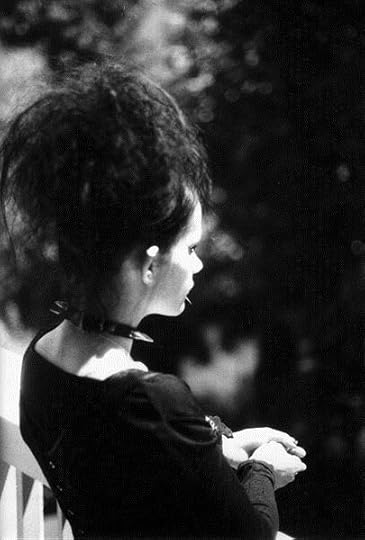Edgar Allan Poe and the Goth Subculture

The Goth Connection
Edgar Allan Poe died more than 160 years ago, yet his lasting legacy still occupies an honored position in that dark corner of literature, reminding us of the dark side of human nature. Because of this, the question has often been asked if he could be considered the first goth, or, certainly, one of that subculture’s earliest influences.
Goths of today are associated with dark lipstick, thick eyeliner, radical hairstyles and black clothing (even though a color as diverse as pink is also worn). However, there is more to the goths than their lugubrious personas. The goth lifestyle makes them happy or comfortable with themselves in their desire to break social norms and be different in a quirky way. It also offers an expression that aligns with their literary, music, and art tastes. Although the movement began during the early ‘80s era of punk rock, goth fans cite a diversity of other influences, ranging from 18th century literature, to 19th century art, to 1960s TV (remember, ‘The Addams Family’ and ‘The Munsters’?).
Proponents of the subculture highlight an understanding and appreciation of the darker and melancholic side of life and existence. They strive to show the world that an underlying bleakness permeates much of everyday life, despite attempts at the contrary by society. The culture’s primary and original driving force involves poetic sensibilities and literary romanticism.
This is why writers associated with those subjects, such as Edgar Allan Poe, have played significant roles for gothic literature. Poe’s fiction has recurring themes, namely violent deaths, man’s relationships with death, the demise of (often attractive) women, madness and obsession. Examples of these are the radiant yet dead Lenore, for whom the narrator pined in The Raven; The poem, Annabel Lee, whose narrator relates of his great love between the two, but also hints at necrophilia; the maiden who was gruesomely murdered in The Murders in the Rue Morgue; and the narrator of The Tell-Tale Heart, whose battle with madness disguised as rationality became his downfall. These are but a few slivers of Poe’s fiction, and yet they depict beauty, passionate devotion, complexities of the criminal mentality, gruesome deaths and gloomy introspection—elements that can sweep away the heart of any romantic horror fiction fan.
Edgar Allan Poe may not have intended to be an icon for the goth subculture that finds picturesque beauty in pain and misery, but he helped shape today’s literary and cultural landscape for their movement.
Sources:
http://www.gradesaver.com/poes-short-stories/study-guide/themes
http://www.urbandictionary.com/define.php?term=Goth+Or+Gothic
http://en.wikipedia.org/wiki/Goth_subculture#18th_and_19th_centuries
Photo Credits:
By Marc Planard via .



